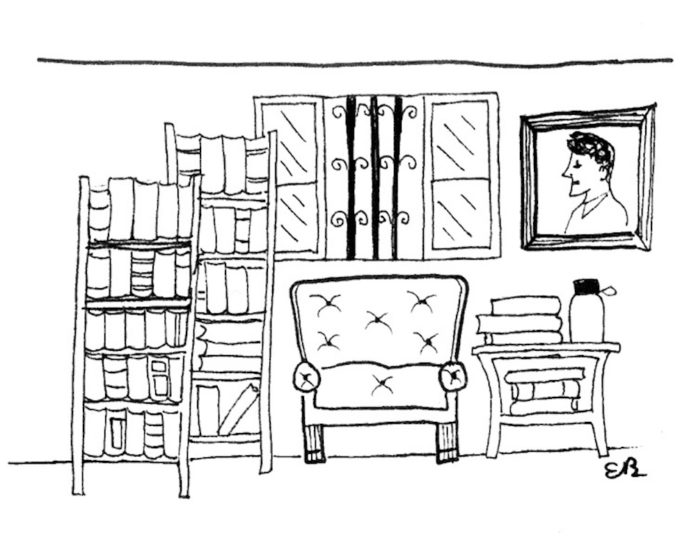Hot take: the Mary Norton Clapp Academic Commons is the best place to be on campus. Nothing puts me in a better mood than grabbing a fresh, steamy cup of drip coffee from the Green Bean, walking through the quad’s dewy morning light toward that illuminated front staircase and finding myself a spot in the quiet section on the main floor.
The Academic Commons is a campus hub. Students walk through the wind-slapping doors almost constantly throughout the day. Even a library admirer, such as myself, shares the same tragedy as many Oxy students: going most of their college career without taking advantage of everything the Academic Commons has to offer. I didn’t learn about the Critical Making Studio (CMS) until this fall, when my housemate told me about her new position as a student support employee. There is a gap between all of the services the Academic Commons offers and how many students use them. If Oxy claims it’s “putting theory into practice and ideas into action,” then the underutilized resources in the Academic Commons contradict our very own mission.
In 2011, the Mary Norton Clapp Library transitioned from a more traditional library to the Academic Commons. This rebranding was an attempt to embrace learning in a technological and digitized age. This is where the root of the problem begins — in the name itself. Oxy’s change from the more commonly understood term “library” to the more vague umbrella term Academic Commons can misguide students as to what they should expect in this space. Instead of fostering curiosity, the ambiguous Academic Commons intimidates students from further pursuing opportunities available to them. Instead, they go back to the stacks and bury their heads in books, where they feel comfortable. At a liberal arts college whose educational model emphasizes soft skills such as critical thinking, we need to embrace modern technology and keep up with new ways of learning. According to Oxy’s website, “much more than just ‘the library,’ Academic Commons is the campus nexus for the intellectual community, expert knowledge and creative resources.” No one really knows what these resources are.
The list of everything the Academic Commons has feels like a never-ending CVS receipt. Beyond bookcases and study cubicles, you can find classrooms, peer subject advisors, a snack lounge, the Brown lab, professors’ offices, Information Technology Services, Special Collections and more. The Academic Commons currently houses nine departments from the Undergraduate Research Center to the Community Literacy Center.
An article in The Atlantic suggests students “just want the basics” from their college library, such as a reliant librarian to help track down pertinent texts. Similar to the restructuring of the Academic Commons, other colleges have dedicated funding and resources to revamp their libraries to prove that they “have more to offer than a simple internet connection.” Students really want more “traditional offerings” of a library — 77 percent of students go to their libraries to study alone and 51 percent go to use online databases.
But if we utilize the Academic Commons to its fullest potential, it could be an integral part of our learning experience at Oxy. At the CMS, for example, students can rent high-tech video cameras, get one-on-one help with Photoshop, work with virtual reality, and create stop-motion videos (think Wallace and Gromit claymation). Professor Heather Luke’s Critical Theory and Social Justice (CTSJ) class “Queer Los Angeles: Cruising the Archive,” for example, utilized Special Collections as a part of the archival research for their projects. At the Center for Digital Liberal Arts (CDLA), many staff members — such as data and information specialist for the social sciences Andrew LaFave — have jobs solely dedicated to helping students develop research papers or brainstorm projects.
Media Arts & Culture (MAC) students frequently utilize the CMS for their classes, but imagine if all Oxy students were aware of the resources available to them from the first day of school. Maybe we’d see more English majors mixing music, or studio art majors using virtual reality (VR) to create insanely realistic VR exhibits where students “walk” through a gallery wearing an Oculus Rift headset. As a psychology major, I could print a 3D model of a rat’s brain to help visualize and compare the anatomy to a human brain. As liberal arts students, we can go beyond our comfort zones and apply our creative and critical minds to the modern world.
I must confess, even I sometimes prefer a hardcover to a PDF. Embracing the new doesn’t have to mean ditching the old. If you believe that Oxy doesn’t have all the books you need, take advantage of the Interlibrary Loan (ILLiad) service where you can request books and materials from a regional consortium of libraries. I encourage students to explore all that’s offered in the Academic Commons. In their classes, professors need to prioritize advertising what’s available, going beyond recommending the Writing Center in a Cultural Studies Program (CSP). You can start by taking a nice stroll around the building, or join in on the late-night hide and seek, and you’ll be surprised at the possibilities that await.
Gabrielle Saliamonas is a senior psychology major. She can be reached at gsaliamonas@oxy.edu.
![]()



































